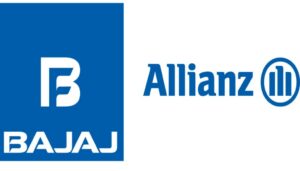Telecom tower industry grapples with declining tenancy ratio coupled with weakening of credit profile of customers: ICRA

India, 22 April 2020- Over the last three years, the telecom service provider industry has been witnessing a turbulent phase, with intense competition and pricing pressures forcing the exit of some telecom operators (telcos) along with consolidation resulting in reduction in number of players. This impacted the telecom tower industry in the form of sizeable tenancy losses. Moreover, the telcos are facing a severe situation as the telcos are required to pay sizeable dues in the form of the adjusted gross revenue (AGR) related payables, which has resulted in weakening of the credit profile of some operators. Notwithstanding these issues, the long-term growth prospects of the tower industry remain healthy with consistent need for expansion of networks by telcos to meet rising data requirements.
Elaborating further, Mr. Ankit Jain, Assistant Vice President, Corporate Ratings, ICRA Limited says, “As per ICRA estimates, the telecom tower industry witnessed a net tenancy loss of around 100,000 tenancies since March 31, 2017 with tenancy ratio declining to 1.37 times as on December 31, 2019 from 1.78 times as on March 31, 2017. On a gross basis the tenancy losses have been higher, but the impact was moderated by network rollout primarily by Reliance Jio Infocomm Limited (RJIL) and Bharti Airtel Limited (BAL). Overall, the industry tenancies fell to around 740,000 as on December 31, 2019 from its peak of around 840,000 on March 2017; while the towers increased to around 540,000 from around 470,000 over the same period resulting in decline in industry tenancy ratio to 1.37 times. The temperance in the overall tenancy ratio has been on account of the sizeable single tenant captive sites for towers of BSNL and RJIL (now owned by Brookfield).”
Nevertheless, the recovery of exit penalties on early cancellation of tenancies have cushioned the impact for the tower companies to some extent. ATC Telecom Infrastructure Private Limited (ATC TIPL), Bharti Infratel Limited (BIL) and Indus Towers Limited (Indus) have been able to secure exit penalties from Tata Group, Vodafone Idea Limited and Bharti Airtel Limited (for Telenor).
While the telecom industry has witnessed consolidation, the tower industry remains quite fragmented with more than eight organised players. However, the top five companies control more than 80% of the towers and more than 85% of the tenancies. The industry is likely to consolidate further with Indus Towers and Bharti Infratel in the process of merging and Reliance Infratel Limited (RITL) selling its tower assets. Apart from consolidation, the tower industry is also likely to become more independently owned as telcos are looking for monetising their stakes in tower assets and focus on their core operations.
Mr. Jain adds, “Going forward, rising data demand, rollout of new technologies and newer applications point to the need for greater network expansion by the telecom industry and thus additional tenancies for the towers. ICRA estimates that industry would add around 120,000 tenancies by FY2023 driving the tenancy ratio to around 1.45 times as on March 31, 2023 from 1.37 times as on December 31, 2019. However, the telecom industry is facing headwinds in the form of AGR payables and if the industry is required to make immediate payment of these dues, then there would be an impact on its long-term industry structure and further consolidation cannot be ruled out. In such a scenario, the tower industry would be staring at additional tenancy losses resulting in decline in tenancy ratio to 1.2 times, translating into sizeable revenue decline of around 20% and operating profit decline of around 23% for FY2021. Moreover, the AGR issue has also resulted in weakening of the credit profile of telcos, which has also translated into elongation in the receivables cycle for the tower industry.”
The tower industry is also witnessing greater fiberisation i.e. connecting the towers with fibre, which is relevant for newer technologies such as 5G to evolve. Increasingly, there can be a role for the tower companies to develop and own the fiber assets as well, becoming a single point infrastructure provider for the telcos. Moreover, the tower industry stands at a strong footing to reap the benefits of growth opportunities, given the robust leverage and coverage metrics.
On the credit impact, Ms. Anupama Arora, Vice President and Sector Head, Corporate Ratings, ICRA Limited explains: “Despite the tenancy losses, the balance sheet position of the tower companies remain comfortable with strong liquidity profile. This along with greater predictability of cashflows has led to committed inflows, which along with relatively low debt levels have translated into comfortable debt coverage metrics of the industry. As per ICRA estimates, the net debt of ICRA sample[1]is expected to be around Rs. 8,400 crore as on March 31, 2020 having increased from around Rs. 1,300 crore as on March 31, 2017. The debt coverage metrics, although have witnessed some deterioration, continue to remain comfortable with estimated Net Debt/OPBDITA of 0.6x and interest coverage of 5.8x for FY2020.”








